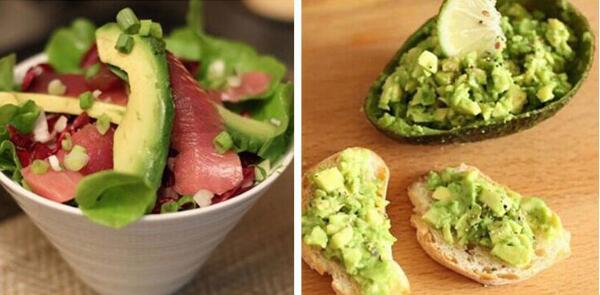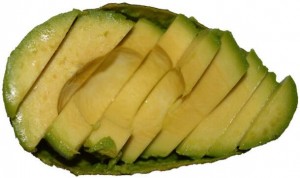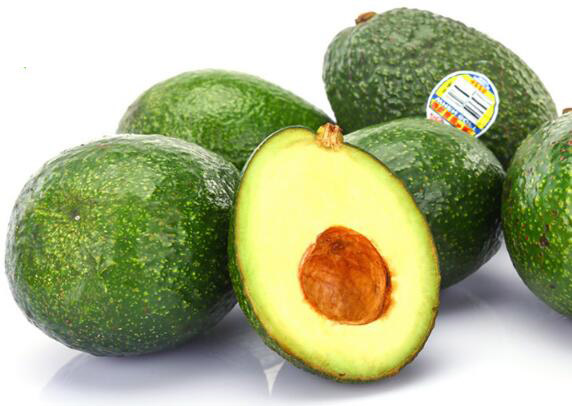 In the 1990s avocado on the fat-free diet craze era, the avocado was shunned. But as time passed people begun to realize the health benefits if eating avocado and have then made adjustments to their diet so as to include avocado.
In the 1990s avocado on the fat-free diet craze era, the avocado was shunned. But as time passed people begun to realize the health benefits if eating avocado and have then made adjustments to their diet so as to include avocado.
The greatest question is; as a diabetic is it safe to eat avocado? The answer is yes. Research has shown that it is not only safe eating avocado as a diabetic but beneficial too. Avocados have been associated in helping the diabetics maintain controlled blood sugar levels.
Thousands of people suffering from erratic blood sugar has been using this ground-breaking solution…
To help them burn away dangerous fat from their vital organs and bellies…
While stabilizing their blood sugar levels naturally and effectively.
And starting today…
Is there any relation between eating avocado and the blood sugar levels?
To people with diabetes keeping your blood sugar level stable is what one strives to achieve. Most nutritionist will recommend a low carbs diet or something that will help control the drastic rise in the blood sugar levels. Well, avocado makes the cut in both of them.
In comparison an average sized apple has 25grms of carbohydrates; a banana has 27 grams whereas an avocado only has 17 grams of the same according to the United States Department of Agriculture.
Breaking this further; one ounce serving of avocado equivalent to 1/5 of the avocado contains only 3 grams of carbohydrates and just 1 gram of sugar in it.
With avocado being low in carbohydrates and sugars as a diabetic on consuming it you won’t have to worry about a drastic rise in the blood sugar levels.
You can also take avocado with other meals so as to prevent a drastic rise in the blood sugar levels. Avocado contains fiber and fats that are digested and absorbed into the blood slowly this ensuring that no drastic blood sugar rise will be registered.
How much is enough?
 The most important thing in ensuring your health safety as a diabetic is talking with your doctor or nutritionist before including a certain food substance to your diet.
The most important thing in ensuring your health safety as a diabetic is talking with your doctor or nutritionist before including a certain food substance to your diet.
One ounce of avocado contains 50 calories whereas a full avocado contains approximately 300 calories. To people struggling to reduce their weight, this can be somewhat too much but you can still make avocado as part of your diet by substituting it with another meal with similar calories count.
Avocado has healthy fats and according to the American Diabetes Association, people should particularly be careful on the kind of fats they eat other than the amount of it. Diabetic people should avoid taking anything with saturated fats, fatty meals, restaurant foods and fried foods. For healthy fats, avocado is the best option.
Avocado and type 2 diabetes
- No drastic rise in the blood glucose levels
Given that avocado have low carbohydrates, on eating it this won’t affect your blood sugar levels. A certain study attempted to investigate the effects of adding avocado to a standard healthy lunch and found that there were no significant rise n the blood sugar levels.
What makes the meal an ideal fruit for people with type 2 diabetes is the fact that; unlike other fiber-rich meals, avocado doesn’t cause a drastic rise in the blood sugar levels.
- Rich in fiber
In general, people eat a standard half avocado which contains 4.6 grams of fiber and 5.9 grams of carbohydrates. Here is a list of the minimum recommended fiber intake for adults according to the National Academics:
- Females below 51 years- 25grams
- Females over 50 years-21 grams
- Males below 51 years-38 grams
- Males over 50 years: 30 grams
In a study published in 2012 in the Journal of the American Board of Family Medicine, evaluating 15 research reports on the effect fiber supplements to people with type 2 diabetes. The results indicated that fiber supplements play a key role in helping reduce the A1c levels and the fasting glucose levels.
Well, on the positive side, you don’t necessarily need to take fiber supplements to achieve this. You can actually eat a high fiber diet which comprises of vegetables, plants and low carbs fruits such as avocados, berries nuts, and green leaves.
- Increase insulin sensitivity and weight management
Research has it that losing extra pounds will help increase insulin sensitivity and as a result, reduce complications that might be associated with type 2 diabetes.
Avocados contain healthy fats that can have you feel full for longer and reduce the urge to eat again. In a study where half an avocado was added as part of the diet, this resulted in a 40% decline in desire to eat more and increased meal satisfaction.
The fats in an avocado increases how effectively the body uses insulin at the same time reducing the urge to grab a snack
In a study published in 2007, as an overweight, taking food that is rich in monounsaturated fats increases insulin sensitivity at the same time helps reduce weight better than a low weight diet.
The healthy fats in it
 In general, there are various types of fats all under two categories healthy fats and unhealthy fats. As a diabetic, it is advised that you should avoid taking food that contains trans fat and saturated fats which all increases bad cholesterol in the body while at the same time lowing the good cholesterol levels. An increase in the LDL which is bad cholesterol makes one prone to heart diseases which are the major cause of death in people with diabetes.
In general, there are various types of fats all under two categories healthy fats and unhealthy fats. As a diabetic, it is advised that you should avoid taking food that contains trans fat and saturated fats which all increases bad cholesterol in the body while at the same time lowing the good cholesterol levels. An increase in the LDL which is bad cholesterol makes one prone to heart diseases which are the major cause of death in people with diabetes.
On the other hand, healthy fats include polyunsaturated fats and monounsaturated fats all of which helps lower the levels of bad cholesterol in the body, as a result reducing the risk of getting a heart disease. You can get healthy fats from:
- Olive oil
- Seeds such as pumpkin seeds and sesame
- Nuts such as almonds, cashew, and peanuts
- Avocado
- Olive and flaxseed oil
All you need to know about avocados
Avocado can be taken with other meals due to its versatile flavor; you can take avocado with rice, salad, savory dishes or even a sandwich
So how do you know a ripe avocado? Unlike cereals, you don’t cook an avocado, instead, you wait for it to get ripe. Generally, a ripe avocado will appear slightly black and will feel soft when you press it.
Other ways to tell whether an avocado is ripe
Make an attempt to remove the avocado stem, if it doesn’t come off easily then the avocado isn’t ripe. We mentioned that the avocado will turn black when ripe but this isn’t always the case there are those which are ripe yet still maintain the green color. If the stem removes easily and the skin beneath is brown, the avocado is overripe.
How to include avocado as part of breakfast
Instead of adding butter to your whole grain toast spread 1-2 tablespoons of avocado. You can also add in garlic, a tomato slice or even some fresh salsa. Remember to add I some vegetables to make it a balanced diet.
Another idea being baking an avocado egg, where you slice the avocado in half and remove the pit, crack an egg placing it on the avocado and having it bake for 15-20 minutes at 425 degrees F.
How to include avocado as part of your lunch
Add avocado slices to your salad or even replace mayonnaise with avocado while making a sandwich. Another idea would be adding smashed avocado to help boost your fiber and healthy fats intake. Instead of taking vegetables such as celery sticks and carrots.
How to include avocado as part of your dinner
You can easily pair Mexican dishes, enchiladas or even fish tacos with an avocado. Avocado can also be used as a topping is sour cream or even chili.
There is no doubt; avocado has numerous health benefits to the diabetic. People with diabetes should see to it that they consult with their doctor on how to include avocado as part of their diet.
My successful Diabetes Treatment Story
My doctor diagnosed me with diabetes just over a year ago, at the time I was prescribed Metformin. I went to the some diabetes related websites and learned about the diet they suggested. I started the diet right away and I was very loyal to it. However, after weeks of being on the diet it never helped, my blood sugar didn’t drop like I wanted it to. My personal physician wasn’t much help either, he didn’t really seem to give me any other options besides my prescription and the usual course of insulin. I was about to give up and then I discovered a great treatment method. The guide was authored by one of the leading professionals in the world of diabetes research, Dr. Max Sidorov. This is a guide that that shows you, in a very simple way, how to conquer the disease without traditional methods. I have to say that since I’ve found the guide and followed it, I’ve not only improved my health but I’ve also lost weight and improved other aspects as well. My activities have increased and I have a ton of energy! It is my goal to share the this diabetes treatment method as much as possible to show people there’s more to the disease than traditional schools of thought and you can find your own path to healing with natural methods.Thousands of people suffering from erratic blood sugar has been using this ground-breaking solution…
To help them burn away dangerous fat from their vital organs and bellies…
While stabilizing their blood sugar levels naturally and effectively.
And starting today…

